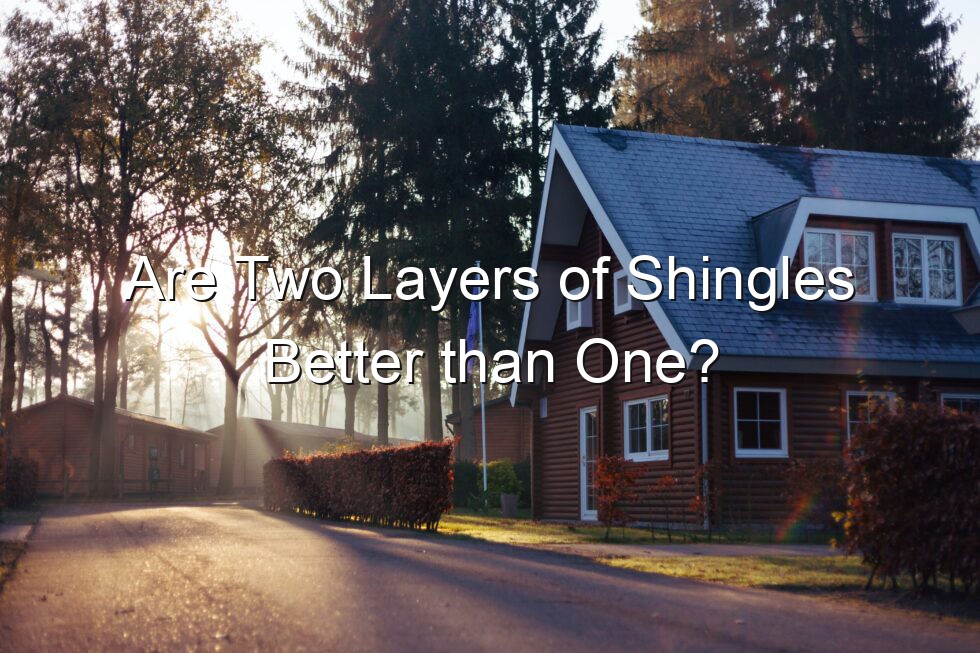Contact us today to ask about our FREE remote Google imaging and/or on-site roofing quotes.
Call us today!
(778) 809-7663
Contact us today to ask about our FREE remote Google imaging and/or on-site roofing quotes.
Call us today!
(778) 809-7663

Are two layers of shingles better than one? In theory it sounds better, an additional layer of shingles to a roof installation should provide additional protection for the homeowner’s roof and it is less costly in the short-term, in theory at least. A few reasons, why this may be appealing:
In reality, the short answer is No, one layer of shingles is always better than two layers of shingles because it offers the most protection possible, by being secured flat to the roof deck it avoids issues with gaps/bumps created by layering shingles. Preventing:
Remember your roof should insulate, ventilate, protect and repel water & debris away from harming your home. It does this by being as flat and thin as possible to reduce the chance of anything getting under the shingles.
Table of Contents
While layering shingles is a bad idea because it:
shortening the top shingle layer’s life drastically in the process; Think of it like a sandwich, with an insulator on top and an insulator below. Each insulator repels water and heat towards one another, not allowing either to escape, and effectively trapping water and heat between the layers;
anytime this happens it’s likely to lead to a leaky roof some day. Due to the layers of shingles, it will be difficult to find the leak in the first place and once it becomes a noticeable leak inside of the home, then the homeowner is already too late. Meaning the homeowner is past due for a roof replacement and they will require major repairs on top of that too. Scary situation;
In further detail, there are about 64 reasons not to put shingles on top of shingles, though there are a few worth noting here:
Home inspectors will report layering of shingles, notifying a prospective buyer of additional costs associated with replacing the roof; Prospective home buyers will be deterred by its lack of curb appeal because a roof is one of the first elements they will see and will give the home listing a bad reputation for being listed for a long time.
Upon roof inspection, the risks associated with the roof’s condition and lifespan being unknown along with the additional roof replacement costs will force them to turn the homeowner down; Unexpected damage repairs will come out of the homeowner’s pocket;
Manufacturers require the installation of a single layer for their material warranty, pro rated enhanced warranty and contractor’s workmanship warranty to be valid;
High storm risk areas will not allow it (risk of tearing the shingles off or flooding the home), while other areas may allow it, though contractors may choose to ignore this in order to sell a layered roof to the homeowner;
Generally, a home’s vital systems; its electrical, plumbing, framing, foundation, roofing and HVAC; are designed to handle the home’s requirements. Meaning when shingles are layered on the roof effectively doubling its weight, a home’s framing isn’t designed to hold that extra weight. Also, leaks become obscure (more likely to happen) so they could be damaging the home’s vital systems without the homeowner even knowing until the leak becomes visible inside the home, when it is already too late;
Between the layers of shingles there could be organic growth (mold, rot, algae, etc.), leaks could be starting in multiple parts of the roof, animals could be burrowing through the soft roof deck below and the old shingles are shortening the life of the new shingles.
Current roof installer can’t replace any roof decking, underlayment, ridge shingles, starter shingles and flashing that the previous installer had installed. They can only overlay new shingles on top of the flat surfaces of the roof, attempting to fasten the shingles on top, but most of the nails will never reach the roof deck (loosely installed shingles on top).
Having an extra layer of protection does sound good in most cases, except when it comes to a homeowner’s roof, which isn't the case unfortunately. As asphalt shingles are meant to be installed flat to the roof deck, so that it can insulate and protect against the elements properly. Preventing water, ice, wind, etc. from getting enough traction or friction to cause any real damage to the roof and home.
Although the short-term cost savings of layering shingles in exchange for forgoing the labor and disposal costs of the old shingles does make it more affordable. The long-term cost of its false sense of security against the outside elements makes it not worth it. As the homeowner will have to replace the roof more often, deal with obscure leaks that could be damaging any one of the home’s vital systems and will ultimately cost them more over the roof’s lifetime.
At the end of the day, it is up to the homeowner and their roofing installer to come to a decision as to what is the best course of action for a roof’s longevity.
Generally, it's not advisable to install two layers of shingles. It can add excessive weight, reduce ventilation, and potentially lead to premature roof failure.
Two layers can strain the roof structure, trap heat, and accelerate wear. Additionally, it can complicate future replacements and repairs.
In some cases, local building codes might permit overlaying shingles. However, it's best to consult a professional roofer to assess your specific situation.
Removing old shingles allows for proper inspection of the roof deck, identification of potential issues, and ensures better adhesion for the new shingles.
Hiring a qualified roofing contractor to evaluate the roof's condition and provide recommendations is crucial in determining whether to remove old shingles or overlay with a new layer.